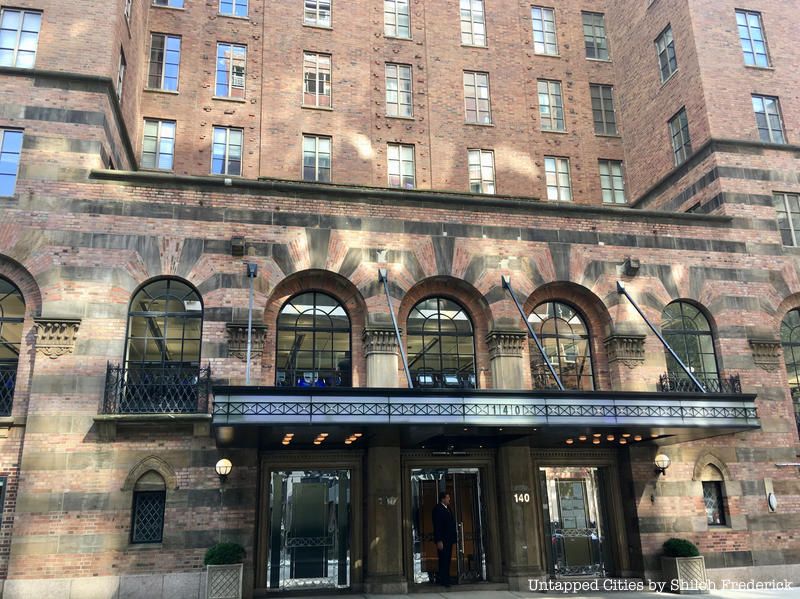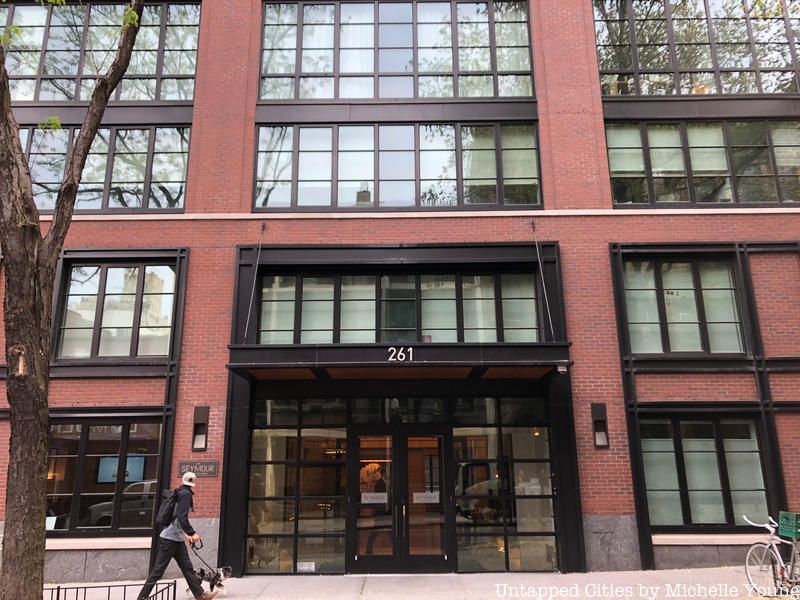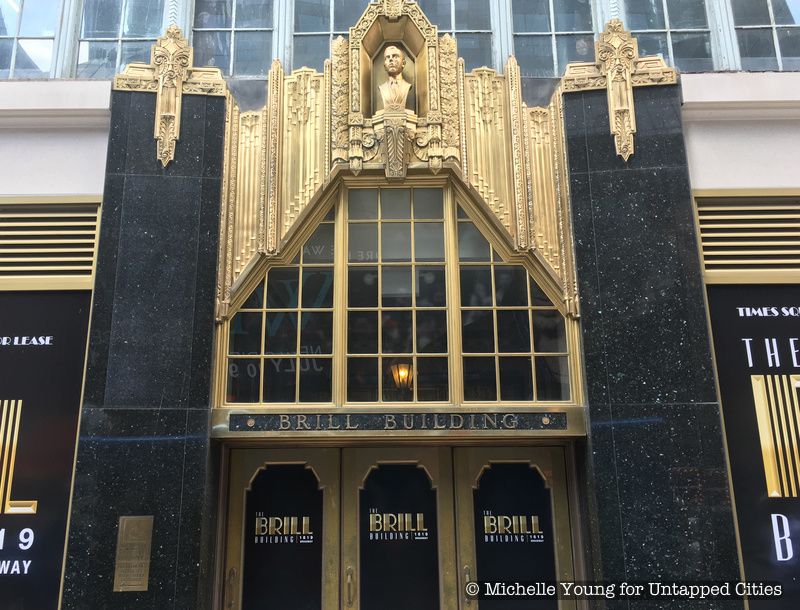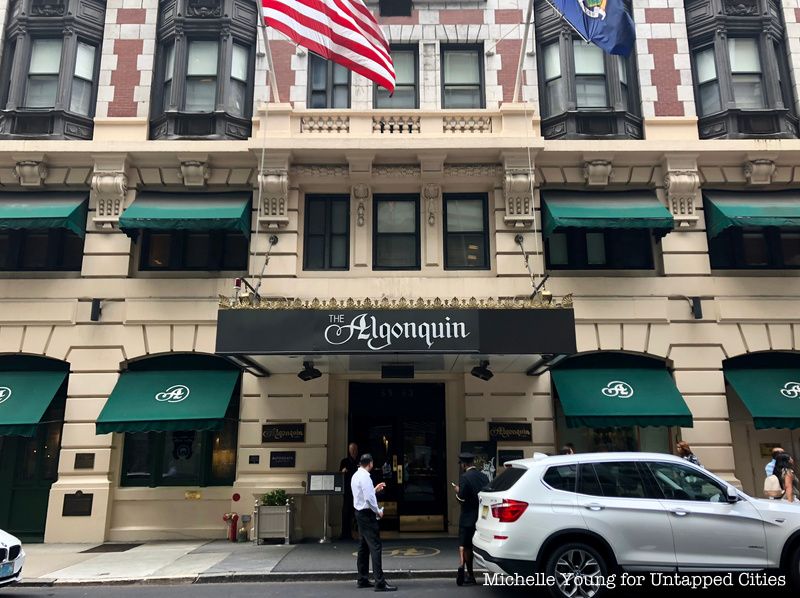10 Giant Menorahs That Will Light Up for Hanukkah in NYC
From Brooklyn to the Bronx, we’ve rounded up the most exciting giant menorahs that will light up throughout the next eight evenings!



Empire State. Chrysler. World Trade Center. The names of New York City buildings can be just as iconic as their physical appearance. Not only do these monikers shed light on a building’s history, but they also provide a glimpse into its function and character.
Over the years, developers have named buildings after historic references, lofty aspirations and even their own family names. This is true of The Decker, a new contemporary condominium that was named as a tribute to the former Newtown Creek Towing Company and its tugboat, the W.O. Decker, and luxury rental building, Huis24, whose name is derived from the Dutch word for house. Here, we look back at 10 iconic buildings in New York City and how they got their unique names: Discover more stories of how NYC places got their names in the new book Names of New York by Joshua Jelly-Schapiro.

The Apthorp is one of many New York City buildings developed by the wealthy Astor family in the 19th and 20th centuries. Built between 1906 and 1908, the 12-story luxury apartment building over 160 units and takes up an entire block. Over the years, it has been home to many celebrities including Cyndi Lauper, Rosie O’Donnell, Robert DeNiro and Nora Ephron (who wrote about her love for the Italian-Renaissance styled building in the New Yorker). One of the main attractions of the Apthorp is its giant inner courtyard that could be accessed by horse-drawn carriages via two archways that open to Broadway and West End Avenue.
While many development projects undertaken by the Astors bear the family name, such as the Waldorf-Astoria and Astor Court, this project is named after the owner of the former Apthorp mansion, merchant and Royalist Charles Ward Apthorp. Elmwood, as the mansion was called, was built in 1764 near the current 91st Street when the Upper West Side was still a rural village. At the time, it was one of the finest mansions in the New York City area. When the Revolutionary War broke out, Elmwood was caught in the crossfires. Apthorp’s mansion was commandeered for use as headquarters by leaders on both sides of the war, among them General George Washington and British General Cornwallis. The mansion survived the war only to succumb to the growth of the city when it was demolished in 1891 to make way for the extension of 91st street.
Preservationist could not save Apthorp’s mansion, which before being paved over was a site known as Elm Park. But in September 1969 the Landmarks Preservation Commission recognized the historic and architectural worth of the Apthorp apartments on Broadway and designated the building a historic landmark.

The Dakota at West 72nd Street and Central Park West, 1899
At its inception, The Dakota was one of New York City’s first apartment buildings, which would also go on to become the city’s most famous one. When Singer Sewing Machine Company co-founder and lawyer, Edward Clark, commissioned the Dakota in 1880, apartment living still carried the stigma associated with tenement housing, and the Upper West Side was only in the beginning stages of development. According to the building’s Landmark Designation Report, the Dakota derived its name from the fact that it was so far away from downtown Manhattan. Friends of Clark would tease that if he built the apartments any further west they would be in the Dakotas, which at the time was still Native American territory.
In order to coax the elite out of their single family homes and into his luxury apartments uptown, Clark had to offer the best amenities. The first step in appealing to renters was to build a beautiful structure. The Dakota was designed by architect Henry Janeway Hardenbergh who would go on to work on the Plaza Hotel and Waldorf-Astoria. Architects find it hard to label Hardenbergh’s design for the Dakota, noting that it incorporates elements of German Renaissance, Chateauesque, and Gothic Revival styles. When the building was complete in 1884, no two of the 65 original apartments were alike and a single unit could contain as many as 16 rooms. 1 W 72nd quickly became a highly desirable address and continues to be to this day. For all the Dakota’s infamous residents (Yoko Ono and John Lennon, Judy Garland, and Lauren Bacall), there are just as many celebrities who have been famously denied entry (Antonio Banderas, Cher, Billy Joel, and Madonna).

In the years immediately following World War I, young, single women flocked to New York City to take advantage of the abundance of professional and educational opportunities. In order to handle the influx of single ladies, hotels catering to this specific demographic, such as the Martha Washington Hotel and the Trowmart Inn, sprung up all over the city. The most desirable option was the Barbizon Hotel for Women.
The Barbizon was built in 1928 by the president of the Lex Ave & 63rd Street Corporation and founder of the Allerton Hotel chain, William H. Silk. Silk wanted this new 23-story hotel to appeal to women pursuing careers in the arts. In attempting to do so, the hotel was named after a small village near the Fontainebleau forest in France that famous painters such as Théodore Rousseau, Jean-Baptiste Corot, and Jean-François Millet called home. New York City’s Barbizon contained a special studio, and rehearsal and concert spaces to help foster the talents of residents, which included Grace Kelly, Sylvia Plath and Joan Crawford. In 2005, The Barbizon was converted into an apartment building called Barbizon 63. The building was designated as a historic landmark in 2012.
Uncover the glamorous history of the Barbizon in our upcoming virtual talk with Paulina Bren, author of The Barbizon: The Hotel that Set Women Free! Tickets to this talk are just $10, or free if you are an Untapped New York Insider! You can gain access to unlimited free virtual events per month and unlock a video archive of 100+ past virtual experiences as an Untapped New York Insider starting at $10/month. Already an Insider? Register here! If you can’t make it live, register for this event and we will send you a link to the recording once it airs!

In English folklore, Puck is the name that has been given to demons, mischievous fairies, and half-faun, half-human creatures through the ages. The most famous iteration of this mythological character is found in Shakespeare’s A Midsummer Night’s Dream. Shakespeare describes his Puck as a “shrewd and knavish sprite.” The childlike and mishcievous nature of Puck made him a perfect mascot for Puck Magazine, a 19th century humor magazine that built its headquarters at 295 Lafayette St.
Puck Magazine was created by Austrian immigrant Joseph Keppler, who first published a German version of the magazine in St. Louis. With aspirations of reaching a larger audience, Keppler moved to New York in 1876 and launched an English version a year later. Puck was the first magazine to sell illustrated advertisements and have full pages of color. The colorful and controversial political cartoons it published led to its meteoric rise in popularity and influence over following years. By 1886, Puck had outgrown its William Street office and moved into a new Romanesque Revival-styled building at the intersection of Houston and Mulberry in New York’s new publishing district. The building, which took on the name of the publication, was designed by Albert Wagner, a German architect, in a manner known as Rundbogenstil, or “round-arch style.” The Public Theater, originally the Astor Library, is another example of this style.
The building features two gilded statues of Puck based on drawings by Keppler that were featured on the magazine’s masthead. It is believed that German immigrant sculptor Henry Baerer made the sculptures based on a zinc model created by Caspar Buberl. Baerer is known for his bust of Beethoven in Central Park, and Buberl created many monuments throughout the country including a statue of Robert Fulton in the collection of the Museum of the City of New York.
The building has had many tenants throughout the years including Spy Magazine, and Billy Joel, who rented space n the building to work on his album “The Bridge.” Today, the Puck building is inhabited by NYU’s Robert F. Wagner Graduate School of Public Service and the wealthy owners and renters of the Puck Penthouses.

Although not a historic building, The Seymour, a new 12-story brick development in Chelsea with 49 residential condominium units, has ties to the rich industrial history of the neighborhood. The building was designed by Hill West Architects with the intention of incorporating Chelsea’s past with artistic and modern design.
The development’s name comes from The Horatio Seymour Club, a historic club that formerly occupied the site. It was run by New York’s 18th governor Horatio Seymour.

In 1929, developer Abraham Lefcourt joined the race against the construction of the Chrysler and Empire State Buildings to build the tallest building in the world. Lefcourt’s plans were for a leased plot at Broadway and 49th street, the site of a clothing store owned by the Brill Brothers. When the stock market crashed and Lefcourt’s son, Alan E. Lefcourt, died unexpectedly, his building ambitions were tempered. Instead of the tallest building in the world, he would go on to build a 10-story office building and name it after his son. Ornamented with a bronze bust of Lefcourt’s son, the Art-Deco building was known as the Lefcourt-Alan Building until Lefcourt defaulted on his lease in 1932 and the Brill Brothers renamed it after themselves.
The Brill building quickly filled up with various musical tenants, from performers and producers, to booking agents and vocal coaches. As jazz and big band music rose in popularity, artist like Duke Ellington and Nat King Cole leased offices inside. Soon the Brill name became synonymous with a musical movement, the Brill Building sound. 1619 Broadway became the epicenter of pop-music in the 1950s and 60s and a hit factory where music industry professionals like Jerry Leiber and Mike Stoller, who wrote for Elvis Presley, churned out radio gold.
The architectural beauty of the Brill Building and its contribution to the music industry earned it landmark status in 2010.

The Ansonia about 1904. Image from Library of Congress
In the early 1900’s, eccentric real estate developer William Earl Dodge Stokes had a vision that the Grand Boulevard, as Broadway was known as at the time, would become the Champs-Élysées of New York. He wanted to build the boulevard’s grandest hotel. Stokes had been piecing together parcels of land from the former site of the New York Orphan Asylum at 73rd Street for years and in 1899, he broke ground on the The Ansonia Hotel.
French architect and student of the École des Beaux-Arts, Paul E.M. Duboy designed the hotel, which opened in 1904. The steel framed structure was 550,000-square-feet with 1,400 rooms and 340 suites spread throughout 17 stories. Notable guests included Babe Ruth (who would walk around in his silk bathrobe) and Igor Stravinsky. Stokes named the building after his grandfather, industrialist Anson Greene Phelps. Stokes, after his mother Caroline Phelps and along with his eight brothers and sisters, was heir to a fortune from the Ansonia Copper and Brass Co., which Anson Greene Phelps founded in 1845 on the banks of the Naugatuck River in Connecticut.
In the 1970s, The Ansonia was converted into 430 rental apartments, but throughout its history, it has been the site of many scandalous events, stories and businesses which you can read more about here.

The original developer and owner of The Algonquin was Albert Foster, but the name and literary legacy of the hotel is credited to its first manager Frank Case. Originally, Foster planned to name his apartment hotel The Puritan. However, Case, who had worked in hotels throughout his life and had been recently employed at the Iroquois Hotel in Buffalo, suggested the name The Algonquin. The Puritan sounded too straight laced for Case and he preferred a Native American name over a European-inspired one like those given to the majority of other hotels.
The Algonquin is perhaps most famous for the group of critics and humorists, known as The Round Table, who convened for lunch there almost daily in the 1920s. This group consisted of theater critic Dorothy Parker, writer Franklin Adams, Vanity Fair editor Robert Benchley and other literary figures of the time.

In 2003, The Gretsch Building joined a long list of Brooklyn warehouses that had been converted into condos. The 10-story complex overlooks the Williamsburg Bridge and contains 120 loft condominiums designed by Andres Escobar. Inside the lobby, two antique guitars give you a clue to the building’s past.
In 1883, German immigrant Friedrich Gretsch set up a small shop in Brooklyn where he made handcrafted banjos, tambourines, and drums. When Friedrich died in 1895, his 15 year old son Fred took over the business and moved operations to a large, 10 story building at 60 Broadway in 1916. By 1920, Gretsch had become the country’s largest manufacturer of musical instruments. Today, Gretsch drums and guitars are still popular and have been used by iconic musicians like George Harrison of the Beatles and Charlie Watts of the Rolling Stones. The Gretsch name is still emblazoned on the outside of the Broadway condos.

The San Remo, The Eldorado and The Beresford are all Upper West Side apartment buildings designed by Margon & Holder associate Emery Roth. Roth’s signature Art Deco design is evident in all three buildings, each of which were named after hotels that previously stood at their respective locations. The San Remo, at 145 Central Park West, became New York City’s first twin towered building when it was completed in 1930. The towers serve both an aesthetic and functional purpose. Modeled after the drum of the Choragic Monument of Lysicrates in Athens, Greece, they were to built to conceal the building’s two water towers. Roth would use this design element again on the Eldorado.
The Eldorado Apartments, at 300 Central Park West — the northernmost of Roth’s Central Park designs — were built on the site of a 1902 apartment house named the El Dorado. Roth’s Eldorado was completed in 1931, and in 1982, the site was converted into co-ops. Overlooking the Jacqueline Kennedy Onassis Reservoir, the building has housed celebrities like Faye Dunaway, Michael J. Fox, and Alec Baldwin.
The Beresford stands out from Roth’s other designs since it has not two, but three towers. Of the five twin-towered apartment structures on Central Park West, the first to be constructed was The Beresford. The original apartment hotel built in 1889 was torn down in 1928 and the Roth’s Beresford, at 211 Central Park West, replaced it a year later
Next, check out the NYC filming locations for Only Murders in the Buildings and NYC Fun Facts: How NYC Earned Its Nickname “The Big Apple”. read about The Upper West Side’s Historic Hotels & Apartments: Ansonia, Dakota, Dorilton, Apthorp, Belnord.
Subscribe to our newsletter